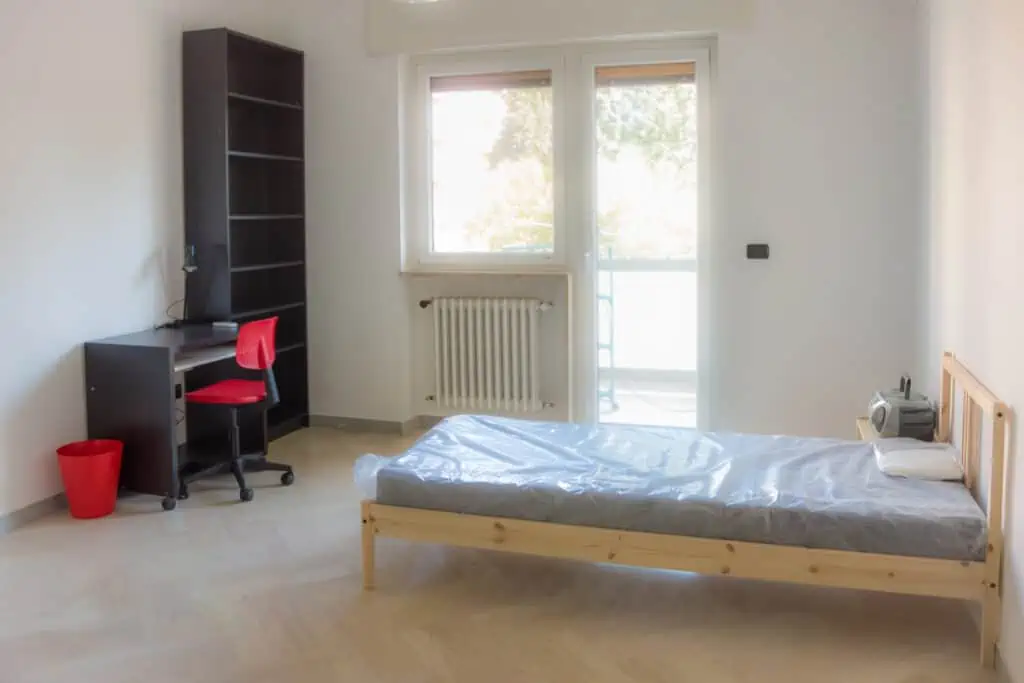In the hustle and bustle of modern life, there’s a growing movement towards simplifying our lifestyles, homes, and minds. Enter rightsizing: A concept that’s rapidly gaining traction as a minimalist way of living. It’s not just about cutting back; it’s about shaping your life to fit you just right.
Interested in learning more? Here’s what you should know about rightsizing and how to incorporate it into your life.
The Art of Rightsizing
Imagine a life where everything around you—from your home to your daily routines—aligns with your personal values and lifestyle. That’s rightsizing. It’s about mindfully creating a space that reflects who you are and what you love, free from the clutter and noise of unnecessary possessions and activities.
If you’re thinking about rightsizing, consider the core principles of this concept:
- Quality over quantity: The mantra of rightsizing is simple: Have less, but better. It’s about cherishing quality over quantity in every aspect of your life, from the things you own to the activities you spend time on.
- Intentional living: Rightsizing urges you to make deliberate choices about your lifestyle. It’s about understanding your needs and desires and aligning your living space, possessions, and daily routines with these values.
- Mindful consumption: This approach involves being mindful about what you bring into your life. Every item and every activity should have a purpose and add value to your life.
- Flexibility and adaptability: A rightsized life is a flexible one. It acknowledges that life changes and so do our needs and preferences. Being adaptable in our living spaces and lifestyles is key.
See prices for local moving labor. Read real customer reviews. Easily book your help online.
Rightsizing vs. Downsizing
While rightsizing and downsizing might seem similar, there are a few ways in which they’re fundamentally different.
Downsizing is often reactive and driven by necessity, like financial constraints or a change in circumstances. It focuses mainly on reducing quantity above all else to keep a smaller space tidy.
Rightsizing is more of a proactive and thoughtful process. It’s not driven by the need to reduce, but by the desire to optimize. Rightsizing is about finding the right fit for your life — it’s a personal and ongoing process towards a more fulfilling way of living. And this can be extended to your personal space to make it more efficient.
Benefits of Rightsizing and Minimalist Living
Embracing rightsizing and minimalist living can bring about lots of benefits that extend far beyond just having a tidier home. Here’s a look at some of the most impactful advantages:
- Mental clarity and focus: By eliminating clutter and excess from your life, you create more space for your thoughts and mental processing. Fewer distractions lead to better focus and clarity, allowing you to concentrate on what truly matters.
- Increased happiness and satisfaction: For many people, there’s a sense of fulfillment that comes from living a life aligned with your values. When your surroundings and lifestyle reflect what’s important to you, it naturally elevates your overall well-being.
- Financial improvements: By prioritizing quality over quantity and valuing experiences over material goods, you can find yourself saving more money and reducing financial stress.
- Improved relationships: With less focus on acquiring stuff, you have more time and energy to invest in relationships. Minimalist living encourages deeper connections with friends and family.
- Environmental impact: A minimalist approach is inherently eco-friendly. By consuming less and choosing sustainable options during rightsizing, you contribute to reduced waste and a lighter ecological footprint.
How To Rightsize
Does rightsizing sound like something you may want to pursue? Here’s a structured approach to assess what areas of your life might need rightsizing:
Reflect on Your Values and Goals
Begin by considering what is most important to you. What are your core values? What goals do you have for your life, both short-term and long-term? This step provides a framework you can use to measure the current state of your life and what might be beneficial to add or cut down on.
Conduct a Life Audit
Break down your life into key areas: Common categories include career, relationships, health, finance, personal development, leisure, and spiritual or emotional well-being. For each area, ask yourself questions like:
- How much time and energy am I currently investing here?
- Does this area align with my values and goals?
- Am I satisfied with this aspect of my life?
- What would I like to change or improve?
Identify imbalances: Look for areas where there is a significant misalignment between the time/energy/resources you’re investing and the importance or satisfaction you derive from that area. For instance, you might be spending a lot of time at work, but it might need rightsizing if it’s not fulfilling. This could then translate into taking less work home with you or creating work-free spaces.
“Invest in items that are durable, bring you joy, and serve a purpose. Some people like to employ the ‘one in, one out’ rule, where you don’t bring any new items into your home without removing something at the same time.”
Consider your well-being: Assess areas like your physical health, mental health, and emotional well-being. Are these being nurtured or neglected? Rightsizing often means making more room for self-care.
Seek feedback: Sometimes it’s hard to see our own lives objectively. Talking to friends, family, or a coach/therapist can provide valuable external perspectives.
See prices for local moving labor. Read real customer reviews. Easily book your help online.
Get Inspiration From Others
Plenty of people have gone through the rightsizing process. If you’re looking for ways to start incorporating rightsizing into your life, you can take inspiration from others’ stories. For instance, check out YouTube channels or TikTok pages dedicated to rightsizing, where you can get ideas and find motivation.
Declutter With Purpose
Sometimes rightsizing does involve decluttering, but this isn’t just about throwing things away — it’s about consciously deciding what stays and what goes based on the value it adds to your life.
When decluttering, it can help to make three piles: keep, toss, and donate. If you’re struggling with the process, consider hiring a professional organizer. Once you’re done, you can donate items that are still usable and in good condition. For anything you throw away, make sure you’re conscious of hazardous waste and do it in an eco-friendly manner.
Consider Moving to the Right Space
When it comes to your home, workspace, or any other personal environment, you might find that the current situation doesn’t fit your needs. Maybe you have a new addition to the family on the way, maybe your kids are grown and you have extra rooms, or maybe you’ve transitioned into a different career.
“A minimalist approach is inherently eco-friendly. By consuming less and choosing sustainable options during rightsizing, you contribute to reduced waste and a lighter ecological footprint.”
Once you determine what you’re missing or what needs to go, you can decide how to create the space that would best suit your needs. Sometimes this involves decluttering or changing a bedroom into a home gym. In some other cases, this might mean it’s time to move, either to someplace closer to family or work, relocating to a neighborhood that better fits your lifestyle, or building a new home from scratch that perfectly matches your current needs.
Ultimately, you’ll need to crunch the numbers and decide which option works with your budget best (don’t forget to include the cost of hiring contractors or moving help).
Embrace Quality Over Quantity
When making new purchases, choose quality over quantity. Invest in items that are durable, bring you joy, and serve a purpose. Some people like to employ the “one in, one out” rule, where you don’t bring any new items into your home without removing something at the same time.
Regularly Reevaluate
Rightsizing is an ongoing process. Every couple of years, you’ll want to reassess your lifestyle, possessions, and routines to ensure they continue to align with your evolving values and circumstances. Remember, rightsizing is about flexibility—you’re allowed to make changes as your needs evolve.
In a world where “more” often feels like the default, rightsizing offers a refreshing alternative. It’s an invitation to slow down, to choose simplicity, and to focus on what truly matters. As a modern minimalist approach, it’s not just about having less; it’s about having what’s right for you, leading to a more meaningful, contented life.










 For nonperishable goods, there are dry goods, such as pasta, rice, cereal, and couscous, and canned foods, such as vegetables or sauces. All nonperishables often wind up costing more to ship or haul than to buy them in the first place. Even with the current bout of inflation, it might not be worth it to pack up and transport all that Chef Boyardee.
For nonperishable goods, there are dry goods, such as pasta, rice, cereal, and couscous, and canned foods, such as vegetables or sauces. All nonperishables often wind up costing more to ship or haul than to buy them in the first place. Even with the current bout of inflation, it might not be worth it to pack up and transport all that Chef Boyardee.
 A great alternative is to hunt down secondhand stuff that is still in good shape.
A great alternative is to hunt down secondhand stuff that is still in good shape. 





